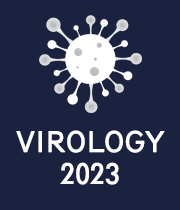Virus Proteomics
Viruses have long been researched as model systems for molecular processes and as tools for uncovering critical cellular regulatory proteins and pathways, in addition to their pathogenesis and related disease. The detection of virion components, protein interactions in infected cells, and virally induced changes in the cellular proteome has been greatly facilitated by recent advances in mass spectrometry methods combined with the development of proteomic approaches, resulting in a more comprehensive understanding of viral infection. Furthermore, an ever-increasing number of high-resolution structures for viral proteins have benefited in the creation and understanding of specific inhibitors that could be utilized in antiviral medicines, as well as provided valuable information on the mechanism of action of these proteins.
- Acutely Infectious Virus
- Cell Signalling
- Host-Based Therapeutics
- Inflammatory Cytokines
- Innate Immune Response
- Proteome Discovery
- Viral Antigens
- Viral Protein Phosphorylation
- Viral Protein Ubiquitination
- Viral Proteins
- Viral Proteome
- Viral Proteome and Pattern Recognition

